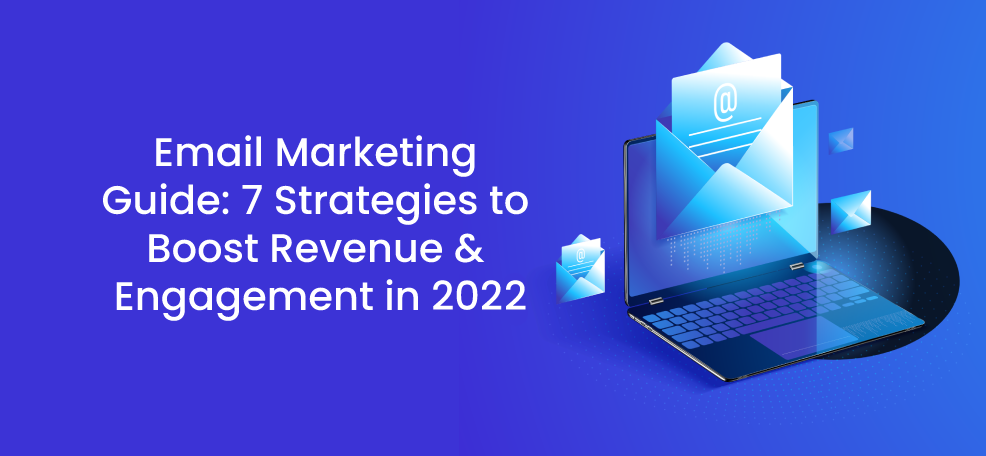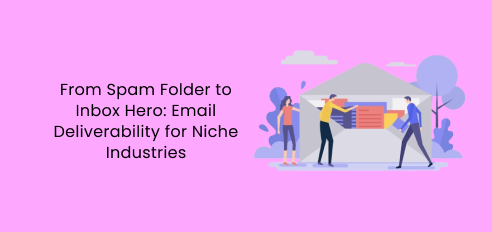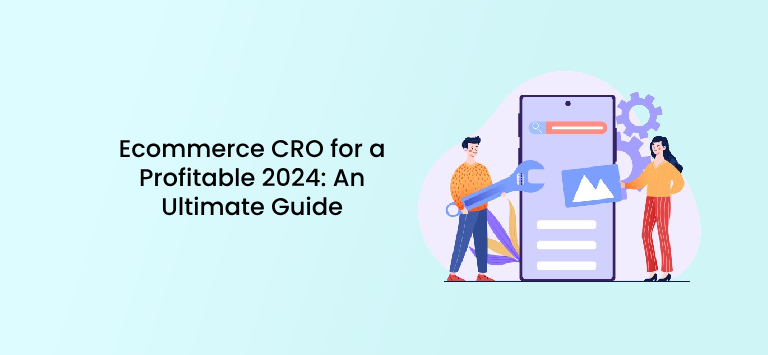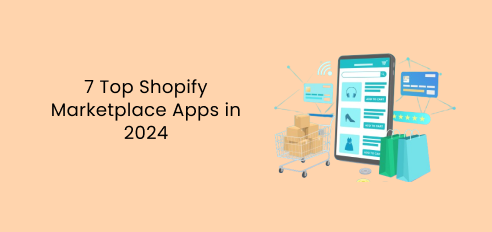The pandemic has left quite a mark on the marketing world.
2020 gave rise to digital marketing, with top-tier companies suddenly transitioning to digital channels, leading to the revitalization of email marketing.
This year, experts are predicting that 2022 will bring further changes, which can only mean one thing: You’ve got to stay on top of the latest trends to ace your marketing strategy and beat your competition.
Email marketing is already four decades old, and it’s not surprising that strategies have changed over the years. However, it remains a key player in online marketing strategies.
Today, email marketers are sending 27% more emails than they did pre-coronavirus, according to HubSpot. What’s also worth noting is that email marketing has now become the go-to line of communication for many leading digital marketers.
As a matter of fact, it has outperformed ALL online marketing strategies!
The data shown above is proof that email marketing delivers the best marketing ROI, with SEO coming in second. Gone are the days when companies would solely boost revenue with SEO.
Then again, combining email and SEO can be an excellent way to help boost your rankings and search visibility. Though that’s a discussion we’d like to save for another day.
Whether you’re an SaaS company, a digital agency, or a marketer new to the email scene, there’s no better time to start than now.
Below are seven email marketing strategies to boost revenue and engagement in 2022. Let’s take a closer look!
1. Personalize Your Email Marketing Messages
Over the past few years, marketing experts have concluded that one of the best ways for any email marketing campaign to generate more revenue and gain more profit is through personalized emails.
Campaign Monitor found that emails with personalized subject lines are 26% more likely to be opened by recipients, adding that such subjects resonate better with readers. And,
Experian revealed that personalized emails get 6X higher transaction rates.
Seriously, who would’ve thought that something as simple as throwing the names of your
consumers into the subject can provide a huge ROI?
Here’s a good example of email personalization. Enterprise attempts to catch the recipient’s attention by using their name before presenting the advertisement.
Admit it, if you were Philip, you’d open this message in a snap!
Besides adding your recipient’s name in your email subject line, you might need to do more, like offering information that’s relevant to them.
Consumers are now looking for hyper-personalized content that matches their wants and interests, and it should be constructed in such a way that looks like it was meant just for them.
According to Lucid, nearly 20% of people will unsubscribe from a newsletter if it contains content or ads they can’t relate to– and you definitely don’t want that happening to you.
Here are a couple of other tips to help you personalize your emails:
- Don’t hesitate to ask for all the information upfront. Great personalization begins with your sign up form. For instance, if you lack any basic details such as name, company, or location, your personalized communication will be very limited. Also, only ask for the information you NEED, not the info you want.
- Use a real reply-to email address. Using [email protected] takes away the message’s authenticity and credibility. To get your readers to be as engaged and responsive as possible, make sure to use a real reply address.
- Use your real email signature. Another way to be personal and build a relationship with your readers is by including your contact details in the email signature. Give them the opportunity to connect with you online, and you’ll notice a revenue boost in no time.
2. Segment Your List
Every email marketer wants a marketing campaign that’s 101% precise so that the right message can hit the right people at the right time.
Email segmentation is the solution.
In fact, all email marketing KPIs perform better when you segment your email list. Keep in mind that not everybody on your list will have the same preferences and buying habits, and your emails should be able to reflect that.
Rather than sending a massive e-blast in just a single click, put in a little extra effort to appeal to each and every one of your subscribers by breaking up your list into smaller groups, or “segments.”
Understanding the specific characteristics that set these groups apart can help you tailor the content of your e-marketing campaigns to each segment, which in turn, can increase your conversions.
Let’s say you own a one-stop shop. You have this customer who buys two bottles of booze each week, and another who purchases baby formula.
Obviously, you wouldn’t want to send the latter an email about a sale on alcoholic drinks, or an email regarding baby products to the former. Instead, separate them into two groups – alcohol and baby – and then you can send them with the appropriate content.
If you’re not sure how to start with segmentation, here are some ideas:
- Segment by industry. Knowing the business of your subscribers is a smart way to segment your email campaigns. For example, a company that sells gadgets would engage at a much higher rate if you send them emails on the latest laptops and phones, compared to an auto dealer.
- Segment by sales cycle. A one-to-one demo or sales pitch won’t work for early stage buyers, which is why we suggest you send them a white paper instead. As for your frequent subscribers, they’ll respond well to free trial offers or product webinars.
- Segment by company size. Chances of a small company with only 5-7 employees attending the biggest industry conference of the year are extremely slim, unlike in the case of a business that employs 400 people. Segment your campaigns by company size or annual revenue to increase your response rates.
3. Use Interactive Emails
Interactive emails are pretty much the holy grail of email marketing. Not only do they boost customer engagement and increase interaction, but they can also help you gather more clicks and higher lead generation rates.
What’s more, by sharing interactive content, you have the guarantee that your email stands out by being informative and educational, rather than just sounding like a sales pitch.
More than 50% of marketers agree that interactive content plays a vital role in convincing customers at the consideration stage of a sale cycle.
77% of them can attest that utilizing interactive content is the secret to multiple exposures and visits, with Martech Advisors reporting that interactive email marketing can significantly boost click-to-open rates by 73%.
Here are some of the interactive email elements expected to help boost your revenue and engagement in 2022:
- Rollover effects to display close-ups or the back side of products
- Animated buttons and call-to-actions
- Surveys, polls, and user-generated interactive content
- Accordion features to make long-form emails more compact
- Interactive image and product carousels which allow users to navigate
4. Focus on user-generated content
Another email marketing trend expected to reach its full potential this year is utilizing user-generated content in your campaigns.
User-generated content (UGC) is any type of content created by a brand’s customers that can be posted on any online platform. They can come in the form of photos, videos, comments, hashtags, chats, and social media challenges.
Not so long ago, UGC only applied to social media, particularly Instagram and YouTube. Now, email marketers are looking at it as if it’s some sort of a precious gem.
According to Stackla’s Consumer & Marketing Perspectives Report, consumers find UGC as 2.4x more authentic than brand-created content, and 79% say UGC highly impacts their purchasing decisions.
Since the majority of the customers trust their fellow customers more than brands and influencers, UGC has turned into one of the main design trends in email marketing.
Below is an example of an email (by Brooklinen) with user reviews.
Additionally, user-generated content can also act as a content in itself. For example, if you’re having a hard time meeting your email content quotas, you can always count on UCG to take your campaign to another level.
5. Automate your email campaigns when necessary
Automation is an email marketing strategy that uses trigger-based emails instead of one-time shots.
And if you’re wondering what trigger emails are, they are emails delivered to your customers’ inboxes as a result of their behaviors. The most common forms include ‘thank you’ emails, ‘welcome’ emails, and transactional emails, such as confirmation email or receipts.
Trigger (or triggered) emails are actually powerful tools in email marketing primarily for two reasons: they’re both timely and relevant. In other words, they provide recipients with real value and usefulness.
Here’s what marketing researchers and experts have said about trigger-based emails:
- Forrester reported that automated email campaigns can generate 4x more revenue and 18x greater profits.
- According to the Direct Marketing Association, trigger email campaigns can be responsible for 20% or more of email marketing revenue.
- Epsilon found that open rates for trigger emails are as high as 49%, which is 95% higher than those of traditional emails.
- An experiment by SuperOffice showed that trigger emails can generate 5X higher open rates and 15% higher click-through rates, as illustrated below.
So, what are the most common use cases for automated emails? Allow us to give you some of them!
- A welcome email for a new subscriber. This should make an impact to your customers, considering that it’s the first email they receive from you. It should include a few basic things about your company and more importantly, encourage engagement.
- Product view abandonment email for customers who were unable to purchase a viewed item. If a customer browses a certain product on a mobile shopping app but fails to buy it, you can send them an automated email highlighting the product, along with other recommended items. That way, you’ll re-engage them after they close the app.
- Subscription renewal reminder for customers whose subscriptions are about to end. To ensure that your customers stay in touch with you, you’ll have to set up this triggered email. As much as possible, send it out a month before the end of the subscription. In case there’s no response or activity from the customer, you can automate a follow-up email for the next few weeks.
- Cart abandonment email for customers who leave without completing a purchase. Cart abandonment, an instance where a customer adds an item to cart but doesn’t end up buying it, is a major issue for anyone in the eCommerce industry. This might mean that they probably had a change of heart, or that they couldn’t load their credit card details at the time. Nevertheless, reminding them with an automated email will help them return to complete the checkout process.
- Order confirmation email for customers who just purchased an item. Confirmation emails are sent right after a customer’s order is completed, informing them that you received and/or processed their order. These emails contain important transaction details, including the purchased products, amount paid, delivery address, and more.
6. Use Text-Only Emails
Similar to how you can boost revenue with SEO, sending your subscribers a text-only email can make them feel more appreciated and valued, leading to higher engagement rates.
It can be a refreshing change for them, especially if you’re writing to them as if they were your own friends. Remember, the goal here is to connect with your customers on a deeper level.
Just because you might be someone who loves to spice your email content with eye-catching pics and GIFs doesn’t mean that you can’t opt to use plain text emails.
Trust us, you can always add a sprinkle. You can also mix them with your other designed emails for maximum effect.
Here’s an example of a text-only email from Hot Jar for inspiration.
Its captivating font and color coordination sure do make a simple email look fantastic, don’t you agree?
7. Grow Your List
All these tips are deemed useless if you have zero email recipients.
The more subscribers you have, the more potential sales you can generate, and of course, the greater your potential revenue.
If you’re not aware, your email marketing database degrades by about 22.5% every year– either it’s because your subscribers’ email addresses change as they transfer to another company or they decided to opt-out of your email communication. Consider using a virtual phone system to provide faster customer support and keep them engaged all the time.
This is why as a digital marketer, one of your main responsibilities is to make sure that you’re adding fresh contacts every now and then.
To grow your list in the surest possible way, see to it that your email sign-up forms are clearly visible across your website. There are also other creative ways such as using chatbots to capture emails.
They should be front and center on your homepage, and should be the first thing people see as soon as they enter your site. However, you can also expand your list using the power of email.
Here are a few tips:
- Encourage your subs to share and forward your emails. Add an “Email to a Friend” button and social sharing buttons in your emails to gain access to your subscribers’ network. Include a “Subscribe” CTA as a simple text-based link at the bottom of your emails so that those receiving the forwarded emails can easily sign up.
- Segment your lists by buyer persona. Send more targeted content to specific segments of your marketing personas by using different types of email subscriptions. Since customers are more likely to click through emails that cater to their specific interests, creating multiple, targeted subscription types can increase the likelihood that visitors will subscribe to one of them.
- Add a link to your employees’ signatures. Hyperlinked email signatures can take people to a landing page where they can opt in to your mailing list.
- Create amazing email content. Producing remarkable content is key to maintaining customer loyalty. Be innovative and think outside the box. Keep and gain more subscribers.
And That’s a Wrap!
With 2022 bringing in more challenges to the marketing industry, expect to see companies becoming more empathetic to their customers, and what better way to do it than by building stronger customer-brand relationships through email marketing?
It’s the perfect marketing channel for forming and keeping connections.
New email marketing trends will continue to emerge, with the older ones still in full force. It’s up to you to decide which strategies can help you boost revenue and engagement, and which to avoid. We wish you nothing but the best!
Author’s Bio:

Shay Berman is the founder and president of Digital Resource, a full-service digital marketing agency located in South Florida. Shay’s clear-cut approach to internet marketing has driven his clients’ businesses to new heights and allowed Digital Resource to land on the Inc 500 list two years in a row and be named as No. 49 on Entrepreneur magazine’s Entrepreneur 360 list.









